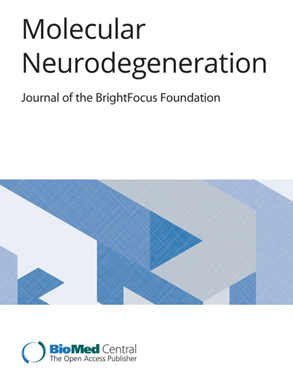Mechanisms of interventions targeting modifiable factors for dementia risk reduction.
IF 17.5
1区 医学
Q1 NEUROSCIENCES
引用次数: 0
Abstract
The global prevalence of dementia is increasing. With no widely available and accessible treatments to halt or reverse the progression of dementia, exploring preventative strategies is critical. Lifestyle-based interventions show promise in preventing or delaying dementia onset. However, understanding the complex and multifactorial mechanisms underlying dementia, and how interventions target these pathways, is essential for developing personalized and effective strategies. In this review, we examined the current evidence of the mediating pathways in dementia risk reduction. We focused on mechanisms investigated in single-domain interventions on physical exercise, cognitive training, diet, metabolic/cardiovascular or psycho-social risk factors in line with those combined in the landmark FINGER trial. Additionally, we synthesized existing literature on mechanisms of action in multimodal interventions combining multiple lifestyle changes. Most evidence was identified in relation to neuroimaging biomarkers with positive effects for all intervention components. The evidence among fluid biomarkers of Alzheimer's disease and related disorders (ADRD) (amyloid-beta peptide (Aβ), tau and neurofilament light chain (Nfl)) vascular markers, inflammatory markers, and neurotrophins were less conclusive, though physical exercise consistently appeared to impact several of these pathways. The findings of this review underscore the potential of lifestyle-based interventions in modulating several different types of pathophysiological pathways associated with dementia. As the number of dementia cases reach epidemic proportions, a multifaceted approach is needed. We propose that the next critical step in dementia prevention/risk reduction is to refine existing intervention tools and develop an adaptive platform that integrates different lifestyle interventions tailored to individual risk profiles and needs. Understanding the underlying mechanisms and biomarkers related to modifiable risk factors will be instrumental to optimising these interventions.针对降低痴呆风险的可改变因素的干预机制。
痴呆症的全球患病率正在上升。由于没有广泛可用和可获得的治疗方法来阻止或逆转痴呆症的进展,探索预防策略至关重要。以生活方式为基础的干预措施在预防或延缓痴呆症发病方面显示出希望。然而,了解痴呆症背后的复杂和多因素机制,以及干预措施如何针对这些途径,对于制定个性化和有效的策略至关重要。在这篇综述中,我们研究了目前有关痴呆风险降低的介导途径的证据。我们重点研究了体育锻炼、认知训练、饮食、代谢/心血管或心理社会风险因素的单一领域干预的机制,与具有里程碑意义的FINGER试验中的综合干预相一致。此外,我们综合了现有文献关于结合多种生活方式改变的多模式干预措施的作用机制。大多数证据与神经成像生物标志物有关,对所有干预成分都有积极作用。阿尔茨海默病和相关疾病(ADRD)的液体生物标志物(淀粉样β肽(Aβ)、tau和神经丝轻链(Nfl))血管标志物、炎症标志物和神经营养素)的证据不太确凿,尽管体育锻炼似乎一直影响着这些途径中的几个。本综述的发现强调了以生活方式为基础的干预在调节与痴呆相关的几种不同类型的病理生理途径方面的潜力。随着痴呆症病例数量达到流行病的程度,需要采取多方面的办法。我们建议,痴呆预防/降低风险的下一个关键步骤是完善现有的干预工具,并开发一个适应性平台,根据个人风险概况和需求整合不同的生活方式干预措施。了解与可改变的风险因素相关的潜在机制和生物标志物将有助于优化这些干预措施。
本文章由计算机程序翻译,如有差异,请以英文原文为准。
求助全文
约1分钟内获得全文
求助全文
来源期刊

Molecular Neurodegeneration
医学-神经科学
CiteScore
23.00
自引率
4.60%
发文量
78
审稿时长
6-12 weeks
期刊介绍:
Molecular Neurodegeneration, an open-access, peer-reviewed journal, comprehensively covers neurodegeneration research at the molecular and cellular levels.
Neurodegenerative diseases, such as Alzheimer's, Parkinson's, Huntington's, and prion diseases, fall under its purview. These disorders, often linked to advanced aging and characterized by varying degrees of dementia, pose a significant public health concern with the growing aging population. Recent strides in understanding the molecular and cellular mechanisms of these neurodegenerative disorders offer valuable insights into their pathogenesis.
 求助内容:
求助内容: 应助结果提醒方式:
应助结果提醒方式:


